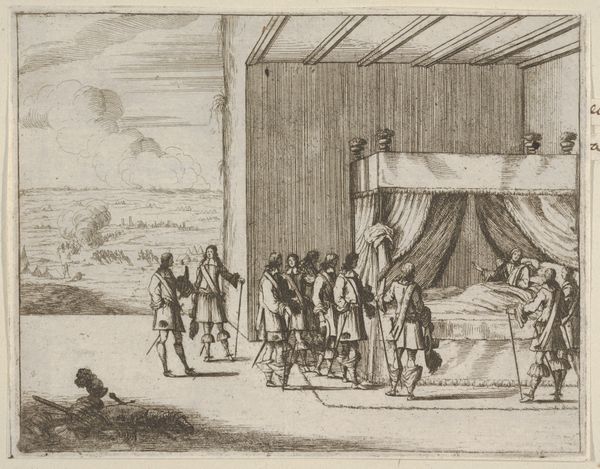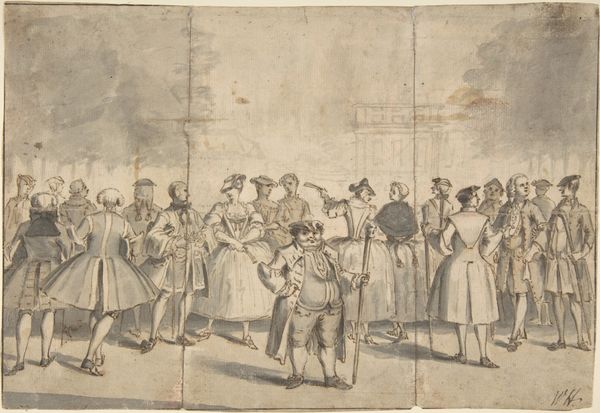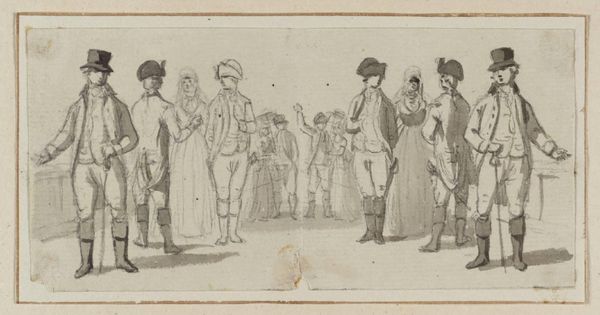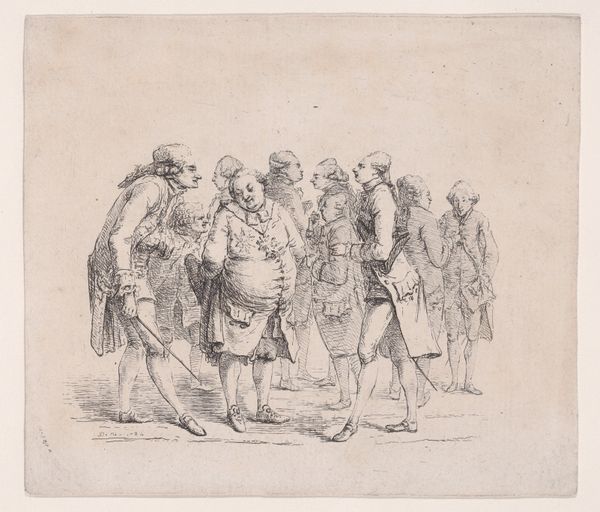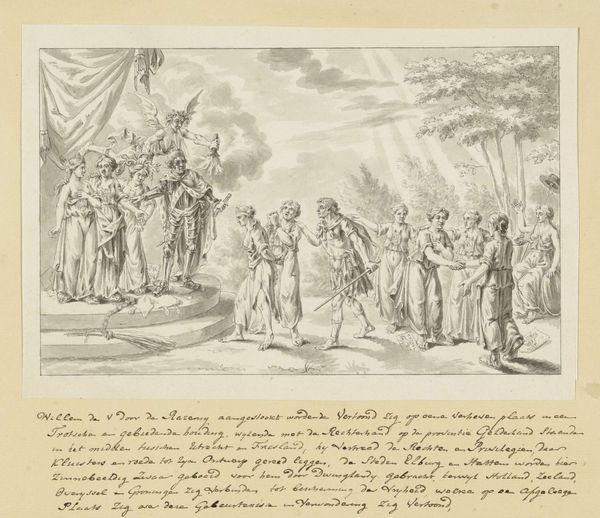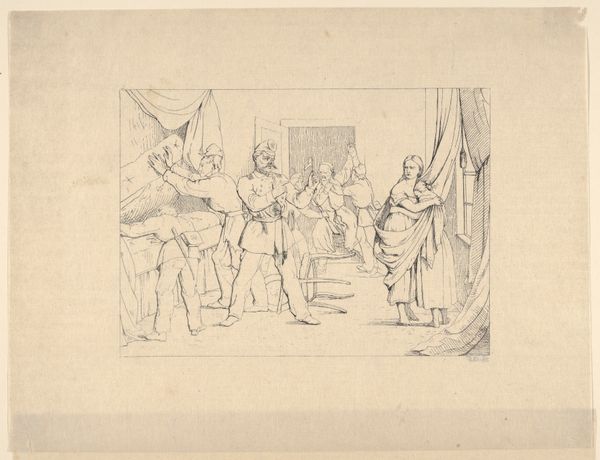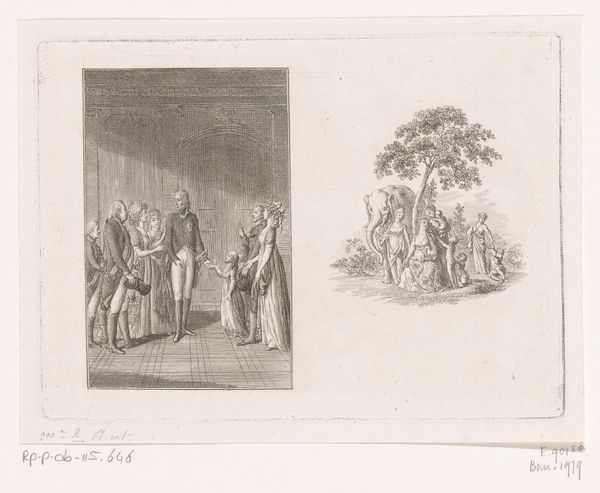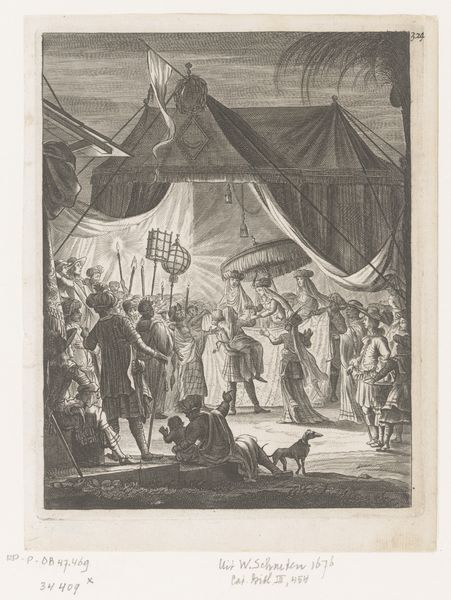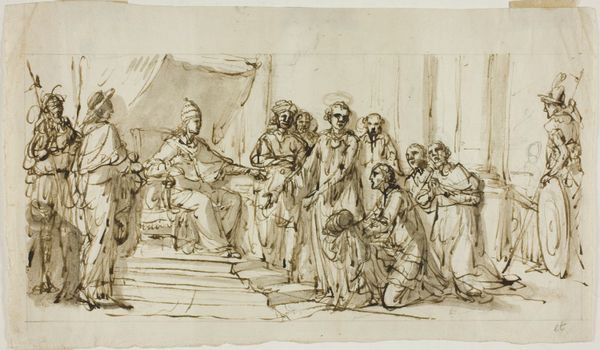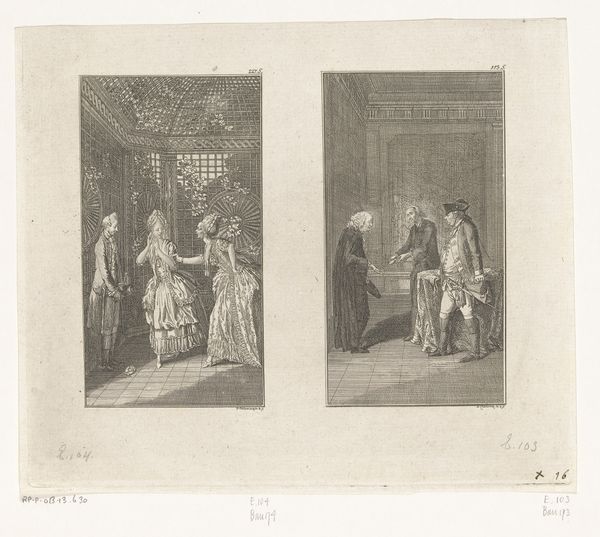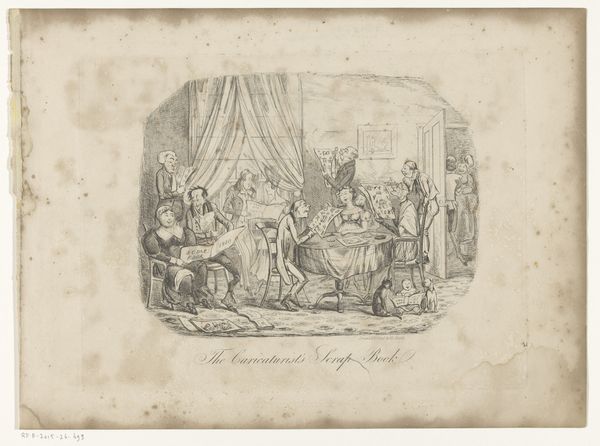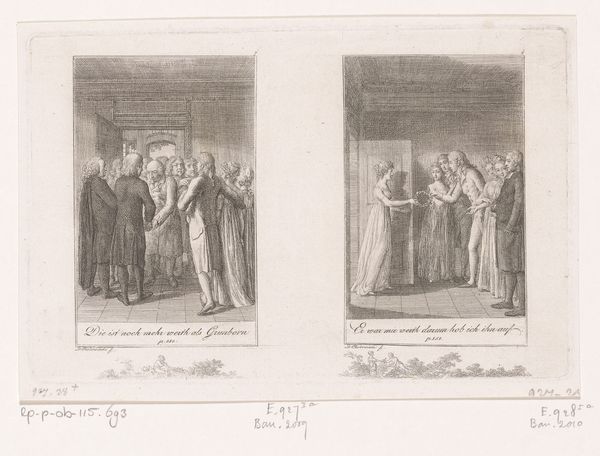
drawing, ink, pencil
#
drawing
#
11_renaissance
#
ink
#
pencil
#
orientalism
Dimensions: 187 mm (height) x 239 mm (width) (bladmaal)
Curator: This sketch, entitled "A Turkish Bride, Mounted on Horseback," was created between 1555 and 1559 by an anonymous artist. It’s rendered in ink and pencil. What strikes you about it? Editor: It has an air of both delicacy and austerity. The monochrome palette, the almost ghost-like figures... it feels like peering through a veil into another world. The draping fabric, rendered so softly, is definitely the focal point for me. Curator: That veil-like quality speaks to a prevalent mode of representation during that era. Consider the genre of Orientalism and how it informed perceptions—and often misperceptions—of Eastern cultures, particularly through a Western lens. This image carries echoes of cultural fascination, exoticism, and, inevitably, power dynamics. How does that make you see the drawing now? Editor: Well, knowing it was likely made by someone outside of that culture definitely shifts the tone. I start to think about what materials would have been available, how the paper itself impacted the way the artwork came to life, and of course the economy of image production for that era. There’s definitely something here about translation too; how does one transport a lived experience from another geography and translate it for consumption? Curator: Precisely. The bride, concealed, becomes a symbol of mystery, but also perhaps of the ways women are positioned within these historical representations. The drapery she is behind is also visually interesting when thinking about female repression, especially since veiling also carries significant historical weight with femininity, religion, and oppression. It encourages a discussion about what the work conceals as much as it reveals. Editor: I agree completely. The craftsmanship with so little, with basic tools, it does ask interesting questions about not just labor but where materials and cultures meet, too. Thinking through it that way complicates our understanding. Curator: Absolutely, seeing it with consideration and a historical eye unveils complex layers of interpretation, urging us to critically assess its place within cultural and art history. Editor: And it underscores the importance of thinking about art in relationship to its process of making; revealing power structures that are always already present, whether it's a pencil sketch or an oil on canvas painting.
Comments
No comments
Be the first to comment and join the conversation on the ultimate creative platform.
